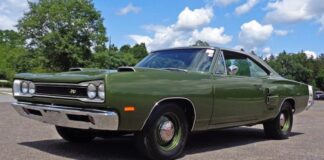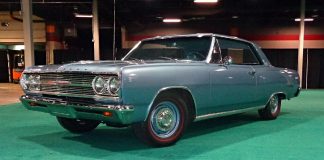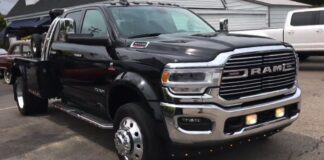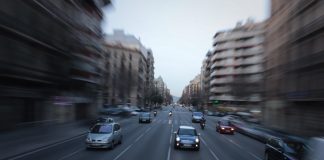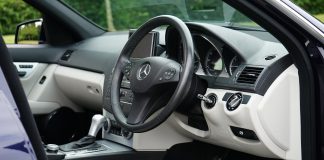Rally cars aren’t just any machines, they’re the epitome of grit, tenacity, and sheer engineering genius. The thrill of rally racing is unmatched, and the cars are the stars of the show. Their unique designs, ground-breaking technology, and jaw-dropping performances have paved the way for countless stories of triumph and glory.
Today, we’ll be taking a closer look at three of the most iconic rally cars ever made – the ones that left a lasting imprint on the motorsports world and continue to inspire generations of car enthusiasts.
We’re talking about the Lancia Stratos, the Audi Quattro, and the Subaru Impreza WRX STI – names that reverberate through the annals of rally racing history. So, sit tight, as we gear up to explore their journeys, right from the drafting table to the finish line.
What Makes a Car a Rally Car?
A rally car is more than just a car; it’s a marvel of engineering designed to face the most challenging conditions. Here’s what makes a car a rally car:
- Reinforced Body: Rally cars are built to withstand extreme conditions. Their bodies are reinforced for extra strength and durability.
- Performance Engine: Rally cars have specially tuned engines to deliver enhanced performance. They need that extra oomph to tackle various terrains at high speed.
- Suspension: The suspension in a rally car is modified for better handling and control on different surfaces, be it gravel, tarmac, or snow.
- Tires: Rally cars sport tires suited to various terrains and weather conditions. These tires provide the necessary traction for optimal control and speed.
- Safety Features: Rally cars are equipped with roll cages, fire suppression systems, and special racing seats and harnesses to ensure driver and co-driver safety.
- All-Weather Capability: Rally cars are designed to perform in all weather conditions. They’re as comfortable in a snowstorm as they are in a desert.
- Navigation System: Unlike most racing sports, rally drivers rely on a co-driver to navigate the course. The navigation system is crucial in a rally car.
- Braking System: Rally cars have advanced braking systems for quick and efficient slowing and stopping, crucial for navigating sharp turns at high speeds.
Ranking the 10 Best Rally Cars Ever Created
#1: 1985 Audi Sport Quattro S1
- Engine: Inline-5, 2.1L
- Power: A roaring 540 bhp
- Torque: A hefty 435 ft-lbs
- Drivetrain: The legendary Quattro AWD
- 0-60 mph: Just a brisk 3.1 sec
- Notable Pilots: The trailblazing Michele Mouton, the unstoppable Walter Röhrl, and the relentless Hannu Mikkola
When Audi rolled out the revamped Sport Quattro S1 at the 1000 Lakes Rally back in August 1985, it was clear that this machine was light years ahead of its era. This wasn’t just an old rally car, it was a peek into the future of rally racing.
Under the hood, Audi took the unique 2.1L inline-5 engine to the next level. The official documents from the factory showed a 470-horsepower output, but let’s be honest here, it was widely believed to deliver well over 500 horsepower. This was largely thanks to the turbocharger being paired with a recirculating air system to cut down on turbo lag.
With the powerful engine, weight reduction, and tweaked aerodynamics working together, the Sport Quattro S1 could go from 0-100 km/h in a mind-blowing 3.1 seconds. Now, that’s a feat today’s supercars strive to achieve.
But, our buddy here was doing it in the mid-’80s. Its impressive speed, swift acceleration, and unparalleled traction were undeniably its trump cards.
In some rally races, you’d find the Audi Sport Quattro S1 outfitted with a prototype of the dual-clutch automatic gearbox. That’s right! The early ancestor of what we now know as DSG (direct-shift gearbox) or PDK (Porsche doppelkupplung) was born in the Sport Quattro S1.
#2: 1986 Ford RS200 Evolution
- Engine: Inline-4, 2.1L
- Power: An impressive 580 bhp
- Torque: A strong 400 ft-lbs
- Drivetrain: Trustworthy 4WD
- 0-60 mph: A blink-and-you’ll-miss-it 3.0 sec
- Notable Driver: The incredible Stig Blomqvist
It was always a kick to see the surprise on folks’ faces when they cracked open the Guinness Book of Records to find that the title for the world’s swiftest accelerating car was held by a Ford. And not just any Ford, but a peculiarly compact, almost cartoonish looking one that seemed alien to anything crafted on American grounds.
You see, that’s because the RS200 was an exceptional creation birthed by Ford of Great Britain. This little beast was purposefully engineered as Ford’s premier four-wheel-drive contender for the wild world of Group B class rally racing – what a time to be alive, right?
However, to meet homologation prerequisites, a certain amount of road-legal versions had to see the light of day.
The big guns were called in to aid Ford in this endeavour, including the likes of chief engineer John Wheeler and Tony Southgate. With their help, the RS200 Evolution epitomized the absolute apex of contemporary racing advancement.
While a decent number of standard RS200s rolled off the production line, a mere 24 Evolution models were birthed to keep Ford at the front of the rally cars pack. These beasts were outfitted with a hefty BTD-E 2.1-litre engine, coupled with a monumental turbo, pushing out a staggering 580 bhp.
And boy, did it pay off. The resultant four-wheel-drive behemoth was nothing short of ‘the fastest accelerating car in the world‘. Piloted by none other than Stig Blomqvist, the RS200 Evo clocked the 0-62mph (100kph) Guinness world record time of a mere 3.07 seconds. A record that remained unbroken for an astonishing twelve years!
#3: 1997 Subaru Impreza S3 WRC
- Powerhouse: 2.0L Boxer-4 Engine
- Horsepower: Mighty 310 bhp
- Torque: Robust 367 ft-lbs
- Drivetrain: Unstoppable 4WD
- 0-60 mph: Lightning-fast 5.0 sec
- Notable Wheelman: The iconic Colin McRae
Rally racing and the dynamic twosome of Colin McRae and the Subaru Impreza S3 WRC have become inseparable. They’ve etched their names into the annals of World Rally Championship history, standing out as the sport’s most emblematic figures.
The S3 WRC, taking the baton from the Impreza 555, burst onto the scene in the 1997 season, a time when the FIA was shaking up the rulebook and introducing a fresh era of World Rally Car competition.
Teams had the world as their oyster, with fewer barriers and more flexibility in aspects such as vehicle dimensions, suspension setup, aerodynamics, and engine tweaks, including intercooler capacity.
Among the significant revamps were fresh camshafts, redesigned cylinder ports, and newly minted combustion chambers. Thus, the 2,712 lbs beast, packing 310 horsepower and 367 lb-ft of torque, was ready to meet its new champion.
Even though McRae didn’t quite recreate his earlier successes, as he had in the driver’s seat of the Group A Subaru Legacy and subsequently the Subaru Impreza 555, the S3 WRC arguably became the most renowned rally car Subaru ever produced that McRae drove.
The spotlight was firmly on him due to his electrifying rivalry with Tommi Mäkinen and his Mitsubishi Evolution IV. The S3 WRC also marked the end of an era as it was the last Subaru that McRae would pilot before he transitioned to the Ford Rally Team in 1999.
Although McRae didn’t clinch the top spot in the drivers’ standings with the S3 WRC, his remarkable performances and victories ensured Subaru’s place at the top, with the company securing three consecutive Manufacturers’ titles.
#4: 1997 Mitsubishi Lancer Evolution IV
- Powerhouse: Stout 2.0L Inline-4 Engine
- Horsepower: Impressive 280 bhp
- Torque: Hearty 369 ft-lbs
- Drivetrain: Dependable 4WD
- 0-60 mph: Speedy 5.5 sec
- Notable Wheelman: The legendary Tommi Mäkinen
The fourth iteration of Mitsubishi’s Lancer Evolution was a testament to four years of relentless development, a product of the sweat and gears from the race tracks. Each year of burning rubber and rallying dust was integrated into the succeeding models, a testament to Mitsubishi’s commitment to staying in pole position.
The Evolution IV roared to life at the 1997 Monte Carlo event, a debut that echoed across the rally world. As the FIA introduced more lenient WRC regulations, the rally stage saw an influx of formidable rivals, namely the Ford Escort, Subaru Impreza, and Toyota Corolla.
These fresh rules meant leeway to tweak suspension, transmission, intake tract, exhaust, and even the engine’s positioning. Like a true innovator, Mitsubishi took advantage of this flexibility, fitting the Evolution with an INVECS sequential gearbox and adjusting the engine’s location for an improved weight balance.
Tommi Mäkinen, a name synonymous with Mitsubishi’s rally success, once again stepped into the limelight with the Mitsubishi Lancer Evolution rally car. His mastery over Evolution IV was evident from the get-go, with victories at the Portugal Rally and in Catalunya.
One unforgettable moment of his stint with the Evo IV was a dramatic encounter with a cow at the Tour de Corse, leading to a spectacular tumble down a cliff.
Despite this incident, Mäkinen clinched the WRC Drivers’ Championship for the second consecutive year, steering Mitsubishi to a respectable 3rd place in the WRC Manufacturers’ Championship. The Evolution IV, with its rally victories and unforgettable moments, left a lasting mark on the world of rally racing.
#5: 1975 Ford Escort RS1800
- Engine: Inline-4 with a displacement of 1.8L
- Power: 115 bhp
- Torque: 126 ft-lbs
- Drivetrain: Rear-Wheel Drive (RWD)
- Acceleration (0-60 mph): 8.2 seconds
- Notable drivers: Hannu Mikkola, Ari Vatanen, Björn Waldegård
I’m willing to bet that not everyone realizes just how deep Ford’s roots go in rally racing. They’ve been kicking up dirt on those off-road tracks almost as long as they’ve been in any other type of motorsport.
The Ford Escort was Ford’s initial leap into the rally scene, and boy, did it make a splash! The story started with the RS1600 and eventually evolved into the ever-dominant RS1800, which had a pretty golden run in the rally circuits during the 70s.
Things really started to heat up when Hannu Mikkola scooped up the World Cup of Rally championship in 1970. This win was just the boost he needed to become the first non-African/European driver to bag the East African Safari Rally title in 1972.
The legendary RS1800s kept their winning streak running deep into the 70s, with a roster that included the likes of Ari Vatanen and Björn Waldegård.
The RS1800 was packing some serious heat under its hood. It sported a 1.8L Cosworth BDE engine that breathed freely without a turbo, a five-speed ZF gearbox, and a five-link suspension setup.
The rally-spec version had a beefed-up chassis and broader wheel arch extensions, which really made it stand out from the regular road-going Ford Escort. It even had four big spotlights fixed up for those tricky night stages.
You know, it’s almost like the real-life version of those “hot wheels Ford escort rally” toys we used to play with! While the specs might not seem like much today, the car’s undeniable success laid the groundwork for Ford’s impressive legacy in rally motorsport.
#6: 1976 Fiat 131 Abarth
- Under the Hood: Roaring 1.8L Inline-4 engine
- Pumping Power: A solid 115 bhp
- Twisting Force: Impressive 126 ft-lbs of torque
- Drive Setup: Classic RWD configuration
- Quick Off the Mark: Hits 0-60 mph in just 8.2 seconds
- Wheel Masters: The legendary Hannu Mikkola, Ari Vatanen, and Björn Waldegård have tamed this beast.
The Fiat Abarth 131 embodies the rich history of rally racing, showcasing the remarkable transformation of an ordinary economy car into a rally champion.
In 1946, Fiat manufactured 400 road-ready versions of the 131 Abarth to meet homologation requirements, immediately entering the World Rally Championship and securing three victories within four years (1977, 1978, and 1980).
Achieving rally success with a car not originally designed for such high-performance off-roading was no small feat. However, Fiat, Bertone, and Abarth collaborated effectively to turn the 131 into a formidable rally machine, capitalizing on its unique rear-wheel-drive (RWD) platform.
The partnership worked diligently to enhance the car’s chassis, implementing disc brakes on all corners, and equipping it with a fully independent suspension featuring MacPherson struts.
Under the hood, the engine received significant upgrades, with a 2.0-litre inline-4, 16-valve powerplant delivering 140 horsepower. This formidable engine was paired with a 5-speed manual transmission, providing the necessary performance for intense rally racing.
Bertone, responsible for the car’s bodywork, skillfully transformed its appearance into a rally-ready contender. The Fiat 131 received a series of modifications, including widened wheel arches, a prominent front air dam, roof and trunk spoilers, and additional air inlets.
To reduce weight, fibreglass was utilized extensively in the body panels, while plexiglass found its way into the side and rear windows.
#7: 1985 Peugeot 205 T16
- Engine Heartbeat: Powerful 2.0L Inline-4 engine
- Horsepower Galore: A hefty 140 bhp
- Torque Output: Stout 130 ft-lbs of torque
- Drivetrain: Trusty RWD setup
- Speed Demon: Zips from 0-60 mph in a swift 7.8 seconds
- Driving Legends: Piloted by the greats like Markku Alen and Walter Röhrl.
Back in the early 80s, the rallying scene had a completely different vibe compared to today. It was during this time that a revolutionary category known as Group B emerged in 1983. The concept behind Group B was to provide manufacturers with a platform to showcase their engineering prowess, with minimal restrictions on design specifications.
This unrestricted environment gave rise to a wave of incredibly powerful competitors, boasting over 500 horsepower, which was considerably faster than the modern-day WRC cars.
To meet the Group B homologation requirements, manufacturers needed to produce 200 road-going versions of their rally machines, with just twenty cars needed for the “Evolution” versions. As a result, performance and speed skyrocketed, necessitating elaborate aerodynamic solutions to keep these beasts glued to the track.
Under the guidance of Jean Todt, Peugeot unleashed their formidable contender, the Peugeot 205 T16, which quickly claimed its reign as the new king of the rally world. With a triumphant debut season, Peugeot secured the Manufacturers’ title in both 1985 and 1986.
Competing against the likes of the Lancia Delta S4, Ford RS200, Austin-Metro 6R4, and the Audi Quattro S1, the battles on the rally stages were intense.
Unfortunately, Group B racing came to a halt in 1986 due to a tragic accident involving a Lancia Delta S4. The incident claimed the lives of Lancia’s lead driver, Henri Toivonen, and his co-driver, Sergio Cresto. The aftermath of this unfortunate event led to the cancellation of Group B, marking the end of an exhilarating era of rallying.
However, Peugeot didn’t let the experience go to waste. They capitalized on their knowledge and expertise gained from Group B and utilized it to develop the Peugeot 205 T16 for the gruelling Paris-Dakar Rally, showcasing their determination and resilience in the world of motorsports.
#8: 1999 Ford Focus WRC MK1
- Heartbeat: A muscular 2.0L Inline-4 engine
- Muscle: A roaring 300 bhp power output
- Grip: A massive torque of 406 ft-lbs
- Traction: AWD for that all-terrain prowess
- Sprint: Blistering 0-60 mph in just 4.2 seconds
- Legends at the Wheel: Piloted by the likes of Colin McRae, Carlos Sainz, and Simon Jean-Joseph
The Ford Focus WRC 1999 holds a special place in rally car history as the first iteration of the Focus model used by the Ford factory team in the WRC. Its debut at Monte Carlo in 1999 marked a turning point for Ford, as they decided to go all out on the rally circuit that season.
With a generous budget and renowned drivers Colin McRae and Carlos Sainz on board, Ford was determined to make their mark.
One of the remarkable aspects of the Focus project was that Ford had the opportunity to design the rally car from scratch. The WRC MK1 shared no parts with its predecessor or the road-going version of the Focus.
Every component of the car was reimagined specifically for the high-intensity world of rally racing, tailored to match the exceptional skills of its drivers. The team responsible for the Focus WRC MK1 consisted of experienced designers and engineers who had previously worked with successful rally outfits.
Despite initial setbacks, the Ford Focus WRC 1999 was ready to take on the rally stages. The car faced controversy early on when stewards raised concerns about its water pump setup, initially deeming it inadmissible. However, after an appeal to the FIA and support from fellow competitors, the car was granted permission to compete at Monte Carlo.
Colin McRae showcased the car’s potential by securing an impressive 3rd place overall, while Simon Jean-Joseph, driving another Focus WRC 1999, finished in 11th position. This strong performance marked a promising debut for the car and set the stage for Ford’s future success.
Over the following three years, the Focus WRC 1999 went on to achieve a remarkable 11 WRC victories, with McRae and the talented newcomer Carlos Sainz behind the wheel.
#9: 2007 Citroen C4 WRC
- Power Plant: A potent 2.0L Inline-4 engine
- Horsepower: An impressive 315 bhp power rating
- Twist: A hefty 419 ft-lbs of torque
- Drivability: AWD system for exceptional control
- Launch: Rapid 0-60 mph in a mere 4.0 seconds
- Stars Behind the Wheel: Driven by rally greats like Sébastien Loeb, Dani Sordo, and Sébastien Ogier
Before its debut in the 2007 World Rally Championship, the Citroen C4 WRC made waves as a captivating centrepiece at the 2006 Paris Motor Show. It took the baton from the successful Xsara WRC, a three-time winner of the world manufacturers’ crowns from 2003 to 2005.
Under the skilled guidance of Citroen Sport’s engineers at Versailles Satory, the road-going concept car, Citroen C4 Sport, evolved into the formidable Citroen C4 WRC.
While maintaining the overall styling, the Citroen Sport design team had to adapt the car to meet international regulations and performance standards. This called for meticulous adjustments.
The initial rolling model of the Citroen C4 WRC had already evolved significantly from the original concept. For instance, the rally version had to forgo the glass roof, as rally racing rules prohibit its use.
With an impressive track record, the Citroen C4 WRC stands as one of the most triumphant cars in rally history, boasting an extraordinary 36 wins out of 56 rallies over its four-year reign.
The skilled driver Sébastien Loeb clinched the Driver’s Title in all four seasons, while Daniel Sordo and Sébastien Ogier contributed to securing Manufacturers’ Titles during that period.
One key factor in the C4 WRC’s success was Citroen’s emphasis on engineering mechanical reliability. This paid off handsomely, as the car managed to finish every rally event of the 2010 season, earning points consistently.
Achieving such consistency is a remarkable feat in motorsports, considering the potential for breakdowns and setbacks. The Citroen C4 WRC provided irrefutable proof that it was not only a sprinter but also a dominant force in the endurance of the rally season.
#10: 1973 Lancia Stratos
- Engine: Heartbeat of a 2.4L Inline-4, pushing a roaring 265 bhp
- Torque: Flexing muscle with a solid 203 ft-lbs
- Drivetrain: RWD, for those slick drifts and slides
- 0-60 mph: A speed demon, sprinting 0-60 mph in just 4.1 sec
- Notable Drivers: Sandro Munari and Björn Waldegård, legends behind the wheel
When it comes to badass-looking cars, the Lancia Stratos definitely takes the spotlight on this list. Its eccentric design, even in its rally form, sets it apart, resembling more of an exotic road-going supercar than a purpose-built rally machine.
The Stratos made its mark in the World Rally Championship as a Group 4 contender, with a production order of 500 examples starting in 1973 and homologation taking place in 1974.
Both the road-going Stradale version and the Group 4 rally car utilized Ferrari’s phased-out Dino 2.4L V6 engine. In the rally variant, the engine was tuned to produce 265 bhp for the 12-valve version and 320 hp for the 24-valve version.
However, due to the regulations in place at the time, only the 12-valve version was allowed to compete. Despite this restriction, the Lancia Stratos showcased its success on the rally stages.
Crafted by the renowned Italian coachbuilder Bertone in Turin and assembled by Lancia at their Chivasso plant, the Lancia Stratos boasted a highly successful design. It played a pivotal role in securing the rallying championships for drivers Sandro Munari and Björn Waldegård in 1974, 1975, and 1976.
Throughout the 1970s, the Stratos and its talented drivers dominated the rally scene, particularly with their emphatic victories in the Monte Carlo Rally of 1975, 1976, and 1977.
Most Asked Questions About Rally Car (FAQs)
How Are Rally Cars Built?
On initial observation, a rally car may seem identical to a standard vehicle, yet the only shared feature is the bodyshell, which serves as the foundation for the rally car’s construction.
Creating a rally car involves purchasing a standard car, disassembling it down to the raw chassis, removing unnecessary elements to reduce weight, and then reinforcing all existing welds and adding new ones to areas where the chassis could potentially break from a jump.
Next, you install a roll cage, engine, brakes, electronics, and interior components such as racing seats, seatbelts, fire extinguishers, switches, intercom, and other parts. Each modification and part installed must meet certain standards to ensure compliance with regulations and achieve homologation, thereby enabling participation in rally races.
In the case of manufacturer vehicles participating in WRC, there were stringent rules regarding the number of standard cars that needed to be produced before a manufacturer could apply for a rally car’s homologation (more than 200 in the Group B era, and over 2500 in Group A).
Rally cars are specifically designed for racing, necessitating regular maintenance and servicing after each event.
What Fuel Do Rally Cars Use?
Crews participating in rallies for enjoyment and are budget-conscious, often rely on standard petrol fuel, just like in everyday vehicles, with assistance from their friends.
However, those with superior vehicles and larger budgets, extending to the World Rally Championship level, typically use high-octane racing fuel, such as Panta Racing fuel, the official provider for WRC rallies. To put it into perspective, the cost of a litre of racing fuel is equivalent to the price of 6–8 litres of ordinary fuel.
What Are Group B Rally Cars?
The so-called “Golden Age of Rallying” began in 1982 as a successor to Group 4. There were minimal restrictions, with the primary aim being to maintain the lowest possible weight and no limit on boost, which led to a doubling of power output from 250hp to over 500hp by 1986.
The combination of extreme power and lightweight vehicles resulted in exciting rallies, leading to a rapid growth in spectator numbers.
However, this also brought issues, as a lack of effective crowd management (with spectators often remaining on the road until just before a car’s arrival) and the immense, difficult-to-control power of the vehicles resulted in a series of deadly accidents.
The 1986 Tour de Corse incident, where Henri Toivonen and Sergio Cresto tragically died in a Lancia Delta S4, marked the end of the Group. Hours after the crash, Group B was banned from future seasons, with Group A becoming the standard for all cars until the WRC regulations were introduced in 1997.
The most commonly used cars during this period included the Audi Quattro A1, A2, and S1; Lancia 037, Delta S4; Renault 5 Maxi Turbo, MG Metro 6R4, and Ford RS200, among others.
Why Do Rally Cars Drift?
In the strictest sense, rally cars don’t actually drift. Drivers often employ the handbrake during sharp bends, as this simplifies the turning process and saves time. The drifting observed on gravel roads, such as those in Finland, is performed to increase cornering speed.
Why Do Rally Cars Backfire and How?
The anti-lag system is responsible for the backfire and loud popping noises. This system works by injecting fuel straight into the exhaust manifold prior to the turbo. The goal is to maintain the turbo’s high-speed rotation, thereby preventing turbo lag when the green light is activated.
How Fast Can Rally Cars Go?
In rally car racing, the emphasis isn’t on achieving the highest speed overall, but rather on the pace the vehicle can maintain while navigating through bends. Rally stages take place on shut public routes, which, unlike drag races, typically don’t feature extended straight sections.
In instances where they do, rally safety marshals necessitate the event organizer to construct a chicane using hay bales to stop rally cars from hitting their maximum speed and possibly crashing on the ensuing turn.
The latest generation of rally cars can attain speeds of around 200 km/h on flat asphalt roads. However, to ensure the safety of both the crew and spectators, the FIA aims to keep the average speed in a rally stage under 130 km/h.
Are Rally Cars Manual or Automatic?
For a variety of reasons, rally cars are not compatible with automatic transmissions; they tend to shift gears slowly, eliminate the thrill of rallying, and prevent high RPM driving, a common requirement in rally stages.
Certain rally cars employ traditional H-pattern manual transmissions, while others utilize sequential transmissions that allow gear selection in a specific order, with a single lever for upshifts and downshifts. WRC rally cars incorporate a paddle-shift mechanism on the steering wheel for even quicker responses.
Why Do Rally Cars Have Roof Scoops?
In order to maintain a comfortable temperature for the crew, considering there’s no air conditioning, the car’s interior can potentially heat up to 50°C during summer rallies.
Just imagine adding several layers of protective gear to that scenario and you’ll understand the crew’s experience. Additionally, on gravel rallies, there’s another crucial role of slightly increasing the car’s interior pressure.
This minor pressure boost prevents dust and sand intrusion, which could drastically obstruct the driver’s view and impede the co-drivers ability to interpret pace notes.
Rallying to the Finish Line: A Salute to Iconic Rally Cars
There’s just something about these iconic machines that gets my gears grinding. In our journey through the world of rally racing, we’ve delved into the impressive specs and vibrant histories of the Lancia Stratos, Audi Quattro, and Subaru Impreza WRX STI.
Each of these rally cars has carved out its own niche in the annals of motorsport. They’ve revolutionized the game with their unique designs, powerful performance, and unmatched endurance. It’s been a joy to immerse ourselves in the stories of these legends.
But the rally world is ever-evolving, constantly challenging the status quo. And that’s the beauty of it! So, let’s stay tuned in, fellow enthusiasts. Because as we’ve seen when it comes to rally cars, the road is always full of surprises.






